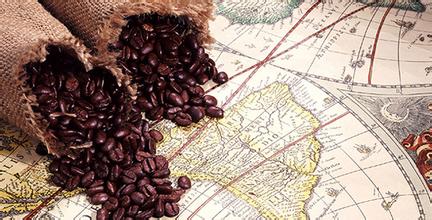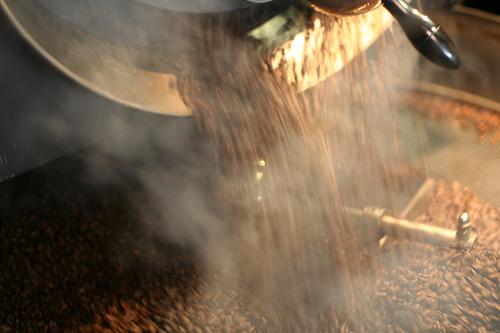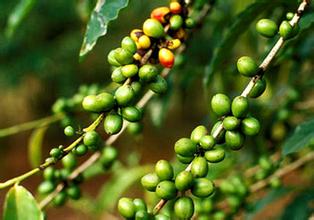Characteristics of Colombian coffee grade Colombian coffee beans taste of Colombian coffee beans brand

1. Classification according to defective beans
There are two kinds of defective beans:
-the first one: it's called a first-class flaw.
-the second kind is called secondary defect.
First: major defects (defects that affect the taste characteristics of coffee): black beans, moldy beans or sour beans
Private raw bean exporters: no more than 12 first-class defective beans
National Coffee Committee: no more than 8 first-class defective beans
Second: secondary defects (defects that affect the appearance of raw beans):
Discolored beans (old beans, over-dried beans, soybeans), broken beans, insect bite beans, shell beans, unripe beans, special-shaped beans
Private raw bean exporters: no more than 60 minor defective beans
National Coffee Committee: no more than 35 secondary defective beans
Note: the number of major defective beans can be replaced by the number of secondary defective beans, and one primary defective bean is equivalent to 10 secondary defective beans.
Boutique coffee
The number of primary defective beans in Grade AA per 500g coffee is zero and the number of secondary defective beans is less than 5.
Grade A has less than 3 primary defective beans and less than 8 secondary defective beans per 500g coffee.
There are less than 8 primary defective beans and less than 35 secondary defective beans per 500g coffee in Grade.
Second, according to the size of the bean
Maragogype Marago is a special tree species with large bean body and low total yield.
No more than 5% of the bean bodies less than 17 mesh but more than 14 mesh in Supremo super-grade samples
In the super sample of Supremo screen 18 + 18 +, the bean body is below 18 mesh but not more than 5% above 14 mesh.
In the first-class samples of Excelso Extra, the number of beans with less than 16 mesh but more than 14 mesh does not exceed 5%.
In the top grade samples of Excelso EP, the percentage of beans with less than 15 mesh but more than 12 mesh is not more than 2.5% (this proportion may also be adjusted to 5% or 8% depending on demand)
U.G.Q. General "Usual Good Quality": no more than 1.5% of beans less than 14 mesh but less than 12 mesh in the sample
Three: according to the region
Traditionally, Colombian coffee is often called the Armenian / Medellin Gourmet.
A few years ago, coffee began to be sold under the name of region: Popayan, Bucaramanga, Huila, Tolima, Medellin, Nari ñ o became the main coffee producing areas.
There are two distinct periods of coffee production in Colombia: Main crop (main season), and second season (Mitaca). The time of the two production periods will be different in different regions.
For example, the harvest time of the main season
Bucaramanga from October to December.
Popayan May-June
The quality of coffee produced in the main season is usually better than that in the next season.
Four: according to the law
According to the National Coffee Council, only high-quality coffee beans are allowed to be exported. These are set by the National Coffee Committee.
Commercial classification: Maragogype, Supremo, Excelso and UGQ.
Grade: Grade AA, Grade A, Special Grade.
Each grade has specific regulations on the size and next degree of the bean.
The National Coffee Council and private bean merchants also classify several categories as boutique coffee, such as coffee with organic, sustainable and fair trade certification.
Source:
Barista-HHC 's blog
Important Notice :
前街咖啡 FrontStreet Coffee has moved to new addredd:
FrontStreet Coffee Address: 315,Donghua East Road,GuangZhou
Tel:020 38364473
- Prev

The change and degree of roasting process the flavor characteristics of roasting degree of coffee beans on the comparison table
The five stages of baking: 1. Dry, when the raw bean is heated, the water vapor in the raw bean will evaporate, and when it reaches about 135 degrees, the raw bean begins to lighten from green and gradually whitens. two。 Dehydration, as heating, raw beans from green to light yellow, when the temperature is about 160 degrees, will emit the smell of grass, or the aroma of baked grain, continuous heating, beans will turn light brown. 3. one
- Next

Introduction to the characteristic flavor of four forms of Ethiopian coffee beans grown and produced in Ethiopia coffee
Growth and production patterns: there are four growth production patterns in Ethiopia, and 95% of coffee is produced from these types or systems. 1. Forest grows in southern and southwestern Ethiopia, mostly wild or under natural forests. It provides natural shade for coffee trees, but the resistance is slightly weak. This production system accounts for about
Related
- What is the meaning of lactic acid fermentation with coffee bean treatment?
- How to judge the state of foam by sound?
- How does the latte pull out the unicorn pattern? Come to get for a little trick to improve the flower pull!
- Will flower pulling affect the taste of the latte?
- Do you know the history of coffee?
- The difference between honey treatment and sun washing what is raisin honey treatment?
- What kind of milk can a novice use to make coffee foam to keep the foam longer? The correct method and skills of milking tutorial sharing
- Why do washed coffee beans taste sour? Flavor characteristics of washed Coffee
- Introduction to the skill of how to practice the size and height of water injection around the circle of hand-brewed coffee
- How do beginners practice coffee flower drawing from scratch?

